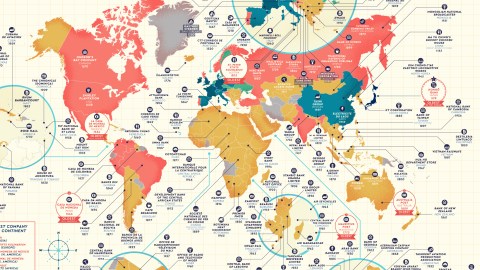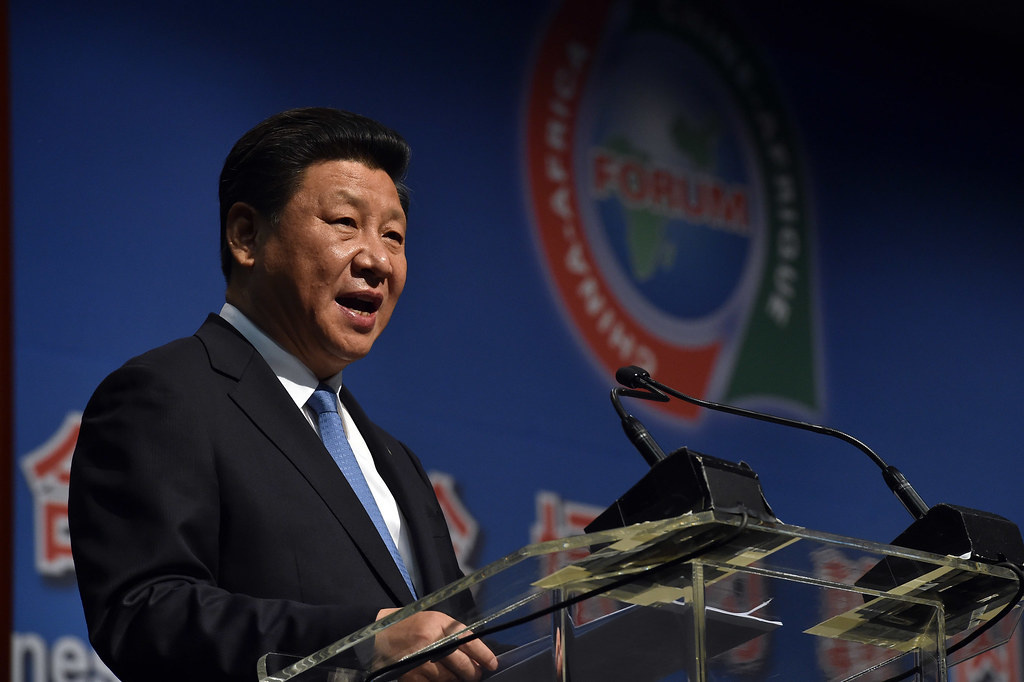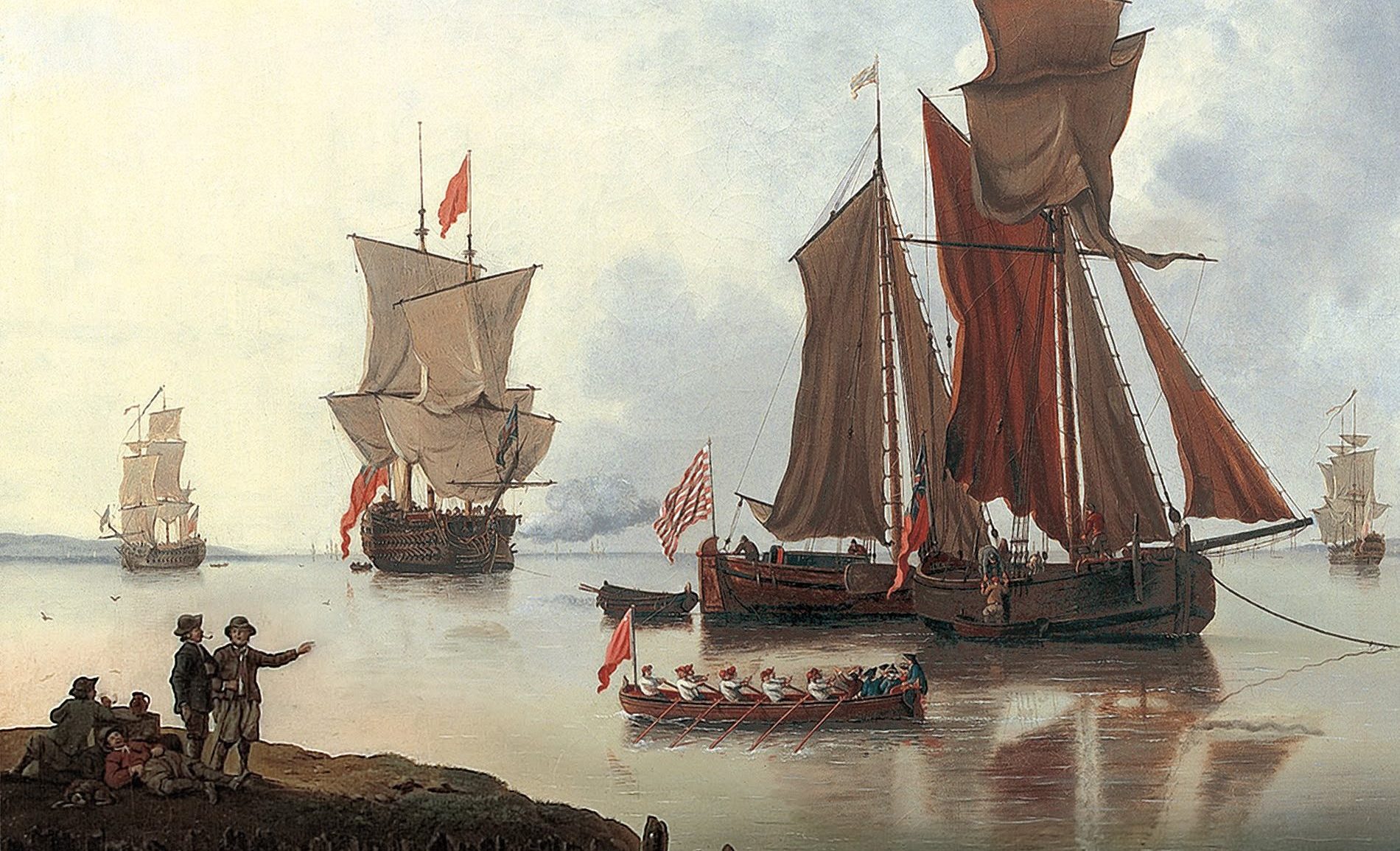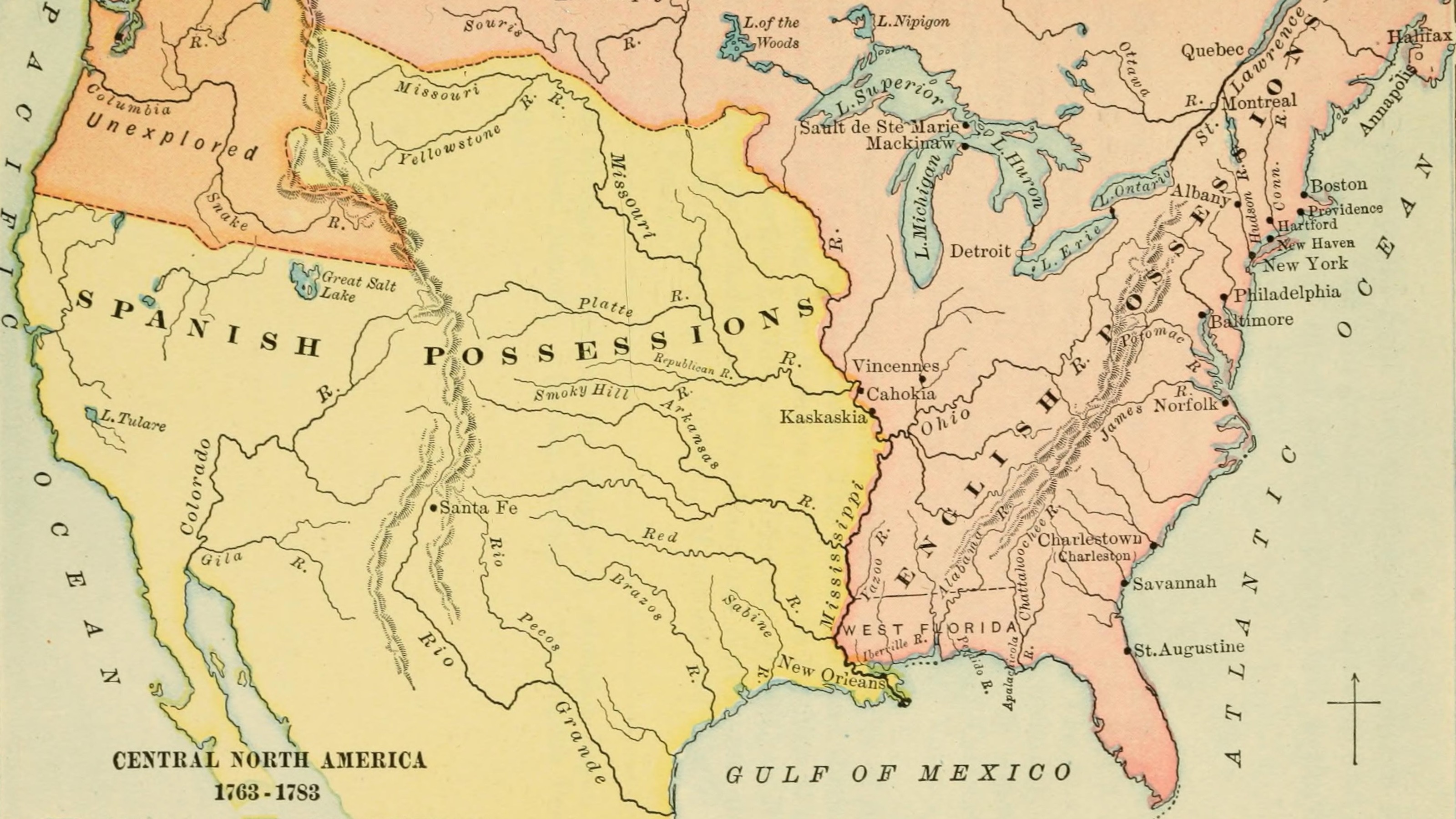Want a company that lasts? Start a bank or a brewery

Image: Business Finance, CC BY-SA 4.0
- A Japanese company has been building Buddhist temples for almost a millennium and a half.
- It’s the oldest continuously operating company in the world, but quite atypical.
- If you want to build a business that lasts, banks, breweries, and postal services are a good bet – but there are intriguing exceptions.

Osaka Castle, built by Kongo Gumi, the world’s oldest company. Image: Suicasmo, CC BY-SA 4.0
‘The oldest profession in the world’: thanks to a popular short story by Kipling (1), that label is now firmly attached to the sex trade. Yet up until the First World War, by which time it was irreparably sullied by its association with prostitution, that mantle had been claimed by other, more reputable trades as well.
No one had a better argument than tailors; for did Adam and Eve, suddenly ashamed of their nakedness after tasting the forbidden fruit, not immediately set about making garments for themselves? Others claiming ‘firstness’ at one time or other include farmers, gardeners, barbers, doctors, teachers, priests, and… murderers.
However, none of these vocations is referenced on these maps, which show not the oldest professions, but the oldest companies for almost each country in the world. It must be that gardening and/or murdering are more of a freelance kind of gig.
If we go by longest surviving company, the oldest profession in the world is that of builder. No business is older than the Japanese construction company Kongō Gumi, founded in 578 AD and still in business today. If we look at each continent separately, the oldest companies per country reveal some interesting characteristics of corporate longevity.

The oldest company in Europe: St Peter Stifts Kulinarium in Austria.Image: Business Finance, CC BY-SA 4.0
Money and alcohol are the mainstays of the oldest companies in nearly half of Europe’s countries. So if you want to found a long-lasting company, get into banking. Or brewing. Other professions with staying power: communications, hospitality, manufacturing. Oh, and salt mines. Europe’s oldest business – and quite possibly the world’s oldest restaurant – is tucked away in an abbey in Salzburg.
- Most popular category: wineries, breweries, and distilleries: 21 countries (listed youngest to oldest).
Romania: Ursus (1878)
Ursus Breweries is a conglomerate of several Romanian breweries, the oldest of which (Cluj-Napoca Brewery) goes back to 1878. Ursus is also the name of the most popular beer in Romania. The company is owned by Asahi Breweries Europe.
Armenia: Yerevan Ararat Brandy-Wine-Vodka Factory (1877)
Started producing wine in 1877 and brandy in 1887. It is most famous for Noy, Armenia’s leading brand of brandy, popular throughout the former Soviet Union.
Belarus: Olivaria (1864)
Current share of the country’s beer market: about 29 percent. Since 2015, Carlsberg owns two thirds of the shares, the European Bank for Reconstruction and Development a further 21 percent.
Bosnia: Sarajevska Pivara (1864)
One of the main beer producers and drinks distributors of the former Yugoslavia.
Hungary: Zwack (1790)
The Zwack distillery in Budapest makes liqueurs and spirits. Its signature beverage is Unicum, a drink with 40 percent alcohol, made with a secret recipe of more than 40 different herbs and spices. It is one of Hungary’s national drinks.
Serbia: Apatin (1756)
Founded as an Imperial brewery by the Austrian Imperial Chamber, Apatin Brewery was privatised at the end of the 19th century, collectivised by Yugoslavia’s communists, and re-privatised in 1991. The leading brewery in Serbia, it is now owned by America’s Molson Coors.
Lithuania: Gubernija (1665)
The pagan Lithuanians had a beer god called Ragutis, and modern Lithuania still has a distinct and thriving beer industry. Gubernija, founded in 1665 and privatised in 1999, produces beer and kvass, a fermented drink made from rye bread.
Latvia: Cēsu Alus (1590)
An audit from 1590 refers to a brewery in Cēsis Castle, the earliest mention of what was to become Cēsu Alus – considered to be the oldest brewery in the Baltics and the Nordics, as well as the largest brewery in Latvia, producing 64 percent of its beer.
Luxembourg: Mousel (1511)
The Mousel company has been brewing beer continuously since 1511, originally in Luxembourg city, now in Diekirch. It is now owned by AB InBev, the world’s largest brewer.
Czech Republic: Pivovar Broumov (1348)
Originally attached to the Benedictine monastery in the eastern Bohemian town of Broumov. Produces light, semi-dark and dark beers, as well as flavored ones.
Netherlands: Brand (1340)
Heineken-owned Brand’s claim to be the oldest brewery in the Netherlands is contested. Historical documents confirm that beer was brewed in its home village since at least 1340, but not whether this has continued uninterruptedly in the centuries since.
Belgium: Affligem (1074)
Although Heineken now owns the brand and the beer is no longer brewed on its premises, Affligem abbey retains final control over the recipes.
Germany: Staffelter Hof (862)
Winery in the Moselle region, established by a grant from Lothair II, the king of Lotharingia. Its name derives from the abbey of Stavelot, from which it depended. In the 18th century, Staffelter Hof played a crucial part in the spread of Riesling grapes throughout the area.
- Banks or mints are the oldest institutions in eight European countries.
Andorra: Andbank (1930)
Despite the country’s own venerable age – dating back to Charlemagne – Andorra’s oldest company is less than a century old.
Cyprus: Bank of Cyprus (1899)
The largest bank in Cyprus by market penetration: 83 percent of Cypriots have an account.
Malta: HSBC Bank Malta (1882)
Now a subsidiary of HSBC, the UK-based multinational bank, it traces back its origins to the late 19th century, when the Anglo-Egyptian Bank started trading on the island.
Liechtenstein: National Bank of Liechtenstein (1861)
Since Liechtenstein is in a customs and monetary union with Switzerland, the job of its National Bank is mainly one of oversight and administration.
Scotland: Bank of Scotland (1695)
Created by the Parliament of Scotland, the Bank of Scotland retains the authority to print sterling notes – legal tender, but difficult to pay with in England. In 1999, the bank’s attempt to enter the retail banking market in the US in a joint venture with evangelist Pat Robertson was cancelled when the latter called Scotland “a dark land overrun by homosexuals.”
Kremnica Mint (1328)
A state-owned mint that has been in continuous production since its establishment by the kingdom of Hungary. In the Middle Ages, its ducats were considered the hardest currency in Central Europe. Today, the Mint produces euro coins for Slovakia and money for a range of other countries (including recently a large order of Sri Lankan rupees).
England: Royal Mint (886)
Wholly owned by Her Majesty’s Treasury, the Royal Mint produces all coinage for the United Kingdom. The company has its origins in Alfred the Great’s issuing of silver pennies after his recapture of London from the Danes in 886. For the first 800 years of its existence, the Royal Mint operated out of the Tower of London. It is now based in Wales.
France: Monnaie de Paris (864)
The Paris Mint is the world’s oldest continuously-running minting institution. It was established by Charles II, a.k.a. ‘the Bald’, king of West Francia and grandson of Charlemagne. Owned by the French government, it is currently tasked with producing the country’s share of euro coins.
- In six European countries, the oldest company is involved in hospitality of some sort or other.
Greece: Kafeneio of Emmanouil Forlidas (1785)
This traditional kafenio has been in the Forlidas family for seven generations, although it has served other functions than that of coffee shop. There are still hooks in the ceiling from its time as a butcher’s, and it’s also served as a time as a barber’s.
Turkey: Çemberlitas Hamami (1584)
A Turkish bath constructed by Mimar Sinan, the chief architect of Ottoman sultan Suleiman the Magnificent. It is located on Divan Yolu, an old Byzantine processional road that once led to Rome. In 1730, an Albanian attendant at the hammam led a rebellion that managed to replace sultan Ahmed III with Mahmud I, who reigned until 1754. The rebellion itself was short-lived, and Patrona Halil was executed later that same year. The bath house has survived fires, earthquakes, and partial demolition. Tourists now make up most of its clientele.
Slovenia: Gostilna Gastuz (1467)
Formerly associated with the Zice Charterhouse, this inn survived the monastery’s dissolution and is still serving guests today.
Switzerland: Gasthof Sternen (1230)
Located in Wettingen Abbey, this inn started as a ‘Weiberhaus’, a guest house for the visiting mothers and sisters of the monks, located outside the walls of the monastery, which was founded in 1227. The name (‘Star’) refers to an epithet of the Virgin Mary, ‘Stella Maris’ (‘Star of the Sea’). It was also the name of the monastery, which was dissolved in 1841.
Ireland: Sean’s Bar (900)
Lore has it that this bar was established as a trading post by an innkeeper named Luain, who gave his name to the town that sprang up around it: Athlone in Irish is Baile atha Luain. He built the floor at a slight angle, so the rainwater running in from the street drains into the River Shannon. The angled floor is still there, another reason for drinkers to mind their step on the way out. Sean’s Bar not only claims to be the oldest drinking establishment in Ireland, but also in Europe.
Austria: St Peter’s Stiftskulinarium (803)
Supposedly mentioned in Alcuin of York’s Carmina, this restaurant within the walls of St Peter’s Abbey in Salzburg has a good claim to being the oldest company in Austria, as well as the oldest restaurant in the world. Among its clientele were Christopher Columbus, Johann Faust and Wolfgang Amadeus Mozart.
- Five countries can boast longevity in manufacturing.
Bulgaria: Arsenal AD (1878)
Arsenal AD started in 1878 as independent Bulgaria’s first armory, then known as the Ruse Artillery Arsenal. From ammunition and artillery gun components, the company diversified into gas masks, nitroglycerin, optic sights and assault rifles. Until the Fall of Communism, the company was called ‘Friedrich Engels Machinery Works’, to conceal its military activities.
Croatia: Kraljevica Shipyard (1729)
Founded on the orders of Austrian emperor Charles VI, it was the first shipyard on the eastern shore of the Adriatic and an engine for the industrialisation of Croatia.
Finland: Fiskars (1649)
Metalworking company named after the town west of Helsinki in which it was founded. Its original charter, granted by queen Christina of Sweden, forbade it to produce cannons. In the early 20th century, Fiskars produced over a million plows. In recent decades, it has become famous for its iconic, orange-handled scissors, of which it has sold more than one billion units.
Sweden: Skyllbergs Bruk (1346)
Established when King Magnus IV of Sweden donated some iron manufacturing workshops in Skyllberg and elsewhere to Riseberga Abbey. Expropriated during the Reformation, the works have subsequently been owned by the Fineman, De Geer, Burenstam and Svensson families.
Marinelli Bell Foundry (1080)
Taken over by the Marinelli family in the 14th century, the Pontificia Fonderia Marinelli is one of the world’s oldest family-run businesses. It produces about 50 bells a year. Unsurprisingly, 90 percent of its orders are for the Catholic church. Bells produced by the company hang in the Leaning Tower of Pisa and the UN building in New York.
- Five more have a history with postal services and other telecommunications.
Albania: ALBtelecom (1912)
Founded at Albania’s independence, ALBtelecom is the country’s largest fixed-line telephone operator. It is also licensed to provide mobile telephony and internet. It is majority-owned by CETEL of Turkey. The Albanian state retains a minority stake.
Montenegro: Posta Crne Gore (1841)
Montenegro has been independent since 2006, but its national postal service is much older.
Iceland: Íslandspóstur (1776)
Established by Christian VII of Denmark, which then also ruled over Iceland. Today, Íslandspóstur is one of the country’s largest companies, with 1,200 employees.
Norway: Posten Norge (1647)
Founded as a private company called Postvesenet, it later received the blessing of Christian IV, king of Denmark (and also Norway at that time). The state took over in 1719. In 1996, it was renamed Posten Norge.
Portugal: CTT-Correios de Portugal (1511)
Portugal’s king Manuel I created the Correio Público, which in 1911 became Correios, Telégraphos e Telefones (CTT), making the current name – CTT-Correios de Portugal – somewhat redundant.
- Three oldest companies come from the food industry.
Kosovo: Meridian Corporation (1999)
Kosovo’s Meridian Corporation is one of the young country’s main food and beverage distributors – address: Bill Clinton Boulevard, Pristina.
Spain: Casa de Ganaderos (1218)
Based on a privilege granted by James I of Aragon, nicknamed ‘the Conqueror’, the Casa de Ganaderos de Zaragoza (‘House of the Cattlemen of Zaragoza’) defends the rights of Aragonese livestock owners.
Denmark: Munke Mølle (1135)
Founded as a water mill on the Odense River, ‘Monk’s Mill’ is still thriving today as a producer of bread and cake mixes. In its long history, it has been the purveyor to the court of no less than 38 kings and two queens of Denmark. These days, the company is owned by Lantmännen, a Swedish agricultural cooperative.
- And finally… two salt mines and a pharmacy.
Estonia: Raeapteek (1422)
In previous centuries, the pharmacy’s range of healing products included mummy juice, bat power, and swallow’s nests. It also sold cognac and gunpowder and was the first in Estonia to sell tobacco. The business was run by the Burchard family for most of its history. From 1582, each generation’s first-born son was called Johann and was expected to continue the business. The last of the line, Johann the Tenth, died in 1890.
Ukraine: Drohobych Salt Plant (1250)
Drohobych, near Lviv, once was one of the richest and most important cities of the Carpathian region, thanks to the local factories manufacturing salt, supplying customers as far away as Italy.
Poland: Bochnia Salt Mine (1248)
Although it ceased mining salt in 1990, the company continues as a tourist attraction. Its various chambers form an underground town, with a functioning chapel and sanatorium. The Wazyn Chamber is large enough to accommodate sports fields, a restaurant, a dormitory and conference facilities.

Mauritius Post is the oldest company in Africa.Image: Business Finance, CC BY-SA 4.0
Africa’s oldest companies are all relatively young. Many were established by former colonisers, and the preponderance of postal services, railways and banks reflect their attempts to replicate the infrastructure of modern European statehood in Africa.
Banks are, in fact, the continent’s most widespread ‘oldest’ institutions: in 17 countries across Africa. The oldest one is Standard Chartered Zimbabwe, with roots going back to 1892. The most recent one is Ivory Bank in South Sudan, Africa’s youngest nation.
In nine countries across Africa, the postal service is the country’s oldest institution. Mauritius Post (1772) is in fact the oldest company in all of Africa. The youngest postal service that is its country’s oldest institution is Correios da Guiné-Bissau (1973).
Railways are the oldest companies in six African countries. The oldest company is the Société nationale des Chemins de fer du Congo (1889) in the DR Congo, the youngest Swazi Rail (1963) in eSwatini.
Unlike Europe, there are only a handful of breweries as their country’s oldest company. Three, in fact: in Tanzania (1933), Eritrea (1939), and Burundi (1955).
Fairly recent ‘oldest’ companies are airlines and broadcasters (four each): from Air Madagascar (1962), to Guinea Equatorial Airlines (1996), and Radio Mogadishu (1943) to the Malawi Broadcasting Corporation (1964).
Relatively few ‘oldest’ companies are involved in agriculture or mining, two mainstays of Africa’s economy:
- The Cameroon Development Corporation (1947) grows, processes and markets tropical export crops (including rubber and palm oil).
- Established in 1962 by Harvey Aluminium Company, Halco Mining has a 70-year lease on bauxite mining in a 10,000 km2 area of northwestern Guinea that runs out in 2038.
- The Botswana Meat Commission (1965) was set up by newly-independent Botswana to oversee beef production and export.
- Cotontchad (1971) has the state monopoly on the purchasing and export of cotton, which represents 40 percent of the country’s exports.
Three atypical companies complete the African picture:
- Premier FCMG is a South African food manufacturer whose history goes back to 1820, and which produces well-known brands such as Blue Ribbon and Snowflake.
- Hamoud Boualem (1878) is a manufacturer of soft drinks popular in Algeria and with the Algerian diaspora.
- The Communauté Électrique du Bénin (1968) is actually co-owned by the governments of Benin and Togo. It manages the Nangbeto dam in Togo and the import of electricity from Ghana into both countries.

La Casa de Moneda de Mexico is the oldest company in North America.Image: Business Finance, CC BY-SA 4.0
Alcohol and money are pretty popular in North America, too. Plantations pop up as a particularly American institution. And Mexico’s mint fathered a few surprising currencies.
- Breweries and distilleries are the oldest companies in five countries across Central America and the Caribbean.
Costa Rica: Florida Ice and Farm Company (1908)
Founded by two Jamaican brothers, the company has a catalogue of over 2000 mainly food products, but is best known for its beers, with well-known brands such as Imperial and Bavaria.
Nicaragua: Flor de Caña (1890)
Founded by an Italian immigrant who moved to Nicaragua in 1875, the company is still led by one of his descendants. Due to the Nicaraguan Revolution in the 1980s, large quantities of the rum were stored – as a result, in the 1990s Flor de Caña had the largest reserve of aged rum in the world.
Haiti : Rhum Barbancourt (1862)
Founded by Dupré Barbancourt, a French immigrant from the Cognac region, the company is still family-run and its rum is one of Haiti’s most famous exports.
Trinidad & Tobago: House of Angostura (1830)
Founded in Venezuela by the German surgeon-general of Simon Bolivar’s army, the company now produces rums and bitters that are some of T&T’s most famous exports.
Barbados: Mount Gay Rum (1703)
The oldest commercial rum distillery in the world, now owned by Cointreau. Named after the manager of the company owned by John Sober (!)
- Five countries across North America have financial as their oldest companies.
1st National Bank of St Lucia (1938)
Originally established as the St Lucia Cooperative Bank.
Panama: National Bank of Panama (1904)
Panama uses the U.S. dollar, so it doesn’t have a central bank in the traditional sense. The National Bank of Panama is charged with non-monetary aspects of central banking.
Belize: Belize Bank (1902)
Founded in 1902 by investors from Mobile, Alabama as the Bank of British Honduras, Belize Bank is one of the largest banks in the country today.
El Salvador: HSBC El Salvador (1891)
Established in 1891 as Banco Salvadoreño, it was nationalised in 1980, privatised in 1993 and acquired by HSBC in 2006. After HSBC sold its Salvadoran operations to Colombian bank Davivienda, the bank is now called Banco Davivienda El Salvador.
Mexico: La Casa de Moneda (1534)
Mexico’s mint was established by a decree from the Spanish Crown and is the oldest in the Americas. Its silver peso became the basis for several modern currencies, including the US dollar, the Japanese yen and the Chinese yuan.
- In four countries, the oldest company has to do with living off the land – at least originally.
Guatemala: Corporacion Multi Inversiones (1920)
A family farming business that grew into a multinational agro-industrial corporation.
Jamaica: Rose Hall (1770)
A former plantation, now a museum highlighting the estate’s slave history, as well as the legend of the White Witch. In 1977, it was acquired by Michele Rollins, Miss District of Columbia 1963 and first runner-up for Miss USA 1963.
Canada: Hudson’s Bay Company (1670)
Starting out as a fur trading business (and for about two centuries the de facto government of large parts of British North America), Hudson’s Bay Company now runs retail stores in Canada and the US, including Saks Fifth Avenue.
United States: Shirley Plantation (1638)
The oldest surviving company in the United States started out as a slave-holding tobacco plantation. The family that ran the Shirley Plantation produced Robert E. Lee, the Confederate general, and still owns and lives on the premises.
The island nation of Dominica’s national newspaper, The Chronicle (est. 1909) is also its oldest company. And finally for North America, two countries have transport companies as their oldest firms: Honduras (National Railroad of Honduras, 1870) and Cuba (Cubana de Aviacion, 1929).

Peru’s Casa Nacional de Moneda is the oldest company in South America.Image: Business Finance, CC BY-SA 4.0
Five South American countries have banks and mints as oldest companies. The oldest, the Casa Nacional de Moneda of Peru, was founded in Lima just 30 years after the city’s own founding by the conquistador Pizarro.
Guyana’s oldest company started as rum business, which expanded into a chain of liquor stores and then added a cocoa and chocolate factory and shipping agency. It got its name from the Demerara Ice House it acquired in 1896, which contained bars, a hotel and a soft drink plant.
Venezuela’s oldest company is a cocoa plantation, Chile’s an arms manufacturer (FAMAE stands for Fabricas y Maestranzas del Ejercito, or Factories and Workshops of the Army).
You can go get a coffee at Uruguay’s oldest company: the Café Brasilero, frequented by writers and intellectuals. It even has a coffee named after Eduardo Galeano, best remembered for Open Veins of Latin America (1971).

Australia Post is the oldest company in Oceania.Image: Business Finance, CC BY-SA 4.0
Scant information about companies in Oceania – so until further notice, Australia Post may claim the continental title of oldest company.
Vanuatu: European Trust Company (1991)
The island nation’s oldest and highest capitalised trust company, providing incorporation and management services, as well as post-incorporation financial services.
New Zealand: Bank of New Zealand (1861)
Its first office opened in Auckland in October 1861, its second the following December in Dunedin. A bit more than a century and a half later, it is one of the four major banks of New Zealand (although in 1992 it was purchased by the National Bank of Australia).
Australia: Australia Post (1809)
Regular postal services in Australia started with the appointment in 1809 of Isaac Nichols, an ex-convict, as Postmaster of New South Wales. His main job was to take charge incoming mail. To avoid chaos on board ships arriving at Sydney, he took letters and parcels to his home in George Street and produce a list of recipients which he would post outside his house and advertise in the Sydney Gazette.

The oldest company in Asia is Kongo Gumi, a Japanese construction firm. It is also the oldest company in the word.Image: Business Finance, CC BY-SA 4.0
A scattered field across Asia – no wonder, it is the world’s largest, most populous and (arguably) most varied continent. There does seem to be a typically Asian speciality, when it comes to corporate longevity: the conglomerate – especially popular in Arabia and the Indian subcontinent.
- In nine Asian countries, the oldest company is a conglomerate, active across various economic sectors.
Bhutan: Tashi Group (1959)
Tashi is actually a conglomerate whose subsidiaries include Tashi Air, T-Bank, Druk School, a chemical plant and a softdrinks bottling plant.
Qatar: Salam International Investment Limited (1952)
Headquartered in Doha, this publicly listed company is involved in construction and development, technology and communications, luxury and consumer products, investment and real estate, and energy production.
Kuwait: M.H. Alshaya (1890)
Founded as a shipping company between Kuwait and British India, the group today is a multinational franchise operator of around 90 brands (e.g. Topshop in Turkey, H&M in the Middle East, the Cheesecake Factory in the UAE), with additional interests in real estate, construction, hotels, automotive and trading.
Thailand: B. Grimm (1878)
Founded as a chemist by a German-Austrian duo, B. Grimm now is a conglomerate with interests in healthcare, construction, real estate, e-commerce and transport, among other sectors. Power generation currently accounts for 80 percent of the revenue of the group, which operates more than 20 power plants in Thailand, four in Laos and one in Vietnam.
Saudi Arabia: House of Alireza (1845)
Founded in 1845 as a food importer from India, the House of Alireza specialised as shipping agents and diversified to include real estate, jewelery, construction, travel agency, fuel manufacture, and engineering.
Pakistan: House of Habib (1841)
A conglomerate that is involved in banking, schools, the automotive and building industries, and more.
Sri Lanka: George Steuart Group (1835)
Originally involved in coffee and tea brokerage, the Group has now diversified into travel, leisure, health, telecoms, shipping, insurance, education, and recruitment.
Bangladesh: M.M. Ispahani (1820)
Owners of Bangladesh’s largest tea company, the group also owns other major food brands, and has interests in shipping, real estate, textiles, and hotels.
India: Wadia Group (1736)
Starting as shipbuilders for the British East India Company, the business has diversified into a conglomerate now including fashion magazines, airlines, engineering, and even a cricket team.
Banks are the oldest companies in Cambodia (1954), Nepal (1937), Jordan (1930), Georgia (1903), Taiwan (1897) and Lebanon (1830).
- Four oldest companies are involved with communication, three with transportation:
Yemenia Airways (1962)
Myanmar National Airlines (1948)
Mongolian National Broadcaster (1931)
KT Corporation, formerly Korea Telecom (1885)
Vietnam Railways (1881)
Singapore Post (1819)
Pos Malaysia (1800)
- Two eateries are the oldest company in their countries, on either side of the continent (plus one coffee shop to stay with the f&b theme):
Israel: Café Abu Salem (1914)
Located in a 250-year-old building in the old market of Nazareth, Café Abu Salem has been continuously operating since 1914. It is currently run by the third generation of the Abu Salem family.
Syria: Bakdash (1885)
A landmark ice cream parlour in the souq of Damascus, famous for a frozen dairy dessert called booza.
China: Ma Yu Ching’s Bucket Chicken House (1153)
A historic restaurant in Kaifeng, said to be established during the Jin dynasty.
Just one alcohol-producing company: Destileria Limtuaco (1853) in the Philippines, established by Lim Tua Co, a Chinese immigrant, who started distilling Vino de Chino, a bittersweet medicinal wine according to an old family recipe.
- Unsurprisingly, oil and coal extraction are a major sector across the world’s largest continent. Some of the oldest companies are significantly older than the countries they operate in.
UAE: Liwa Chemicals (1939)
Specialised in equipment and services to do with oil, gas and petrochemical sectors.
Oman: Petroleum Development Oman (1937)
The leading exploration and production company in the Sultanate of Oman, it delivers the majority of the country’s crude oil production and natural gas supply.
Iraq: North Oil Company (1928)
Headquartered in Kirkuk (northern Iraq), its boundaries extend from the country’s northern borders to 32.5 °N, just south of Baghdad. It is one of the 16 companies that comprise the Iraqi Ministry of Oil.
Kazakhstan: Bogatyr Coal (1913)
The largest coal mining company in Kazakhstan, producing 42 million tonnes of coal in 2018, about 40 percent of the country’s total for that year. Originally founded with capital from British and American investors (including Herbert Hoover), the mine was nationalised by the Soviets in 1918 and re-privatised by the Kazakhs in the 1990s. It operates the Bogatyr Mine, whose output of 56.8 million tonnes of coal in 1985 got it into the Guinness Book of Records as the world’s largest coal mine. The company’s reserves could keep it in business for another 100 years.
- Manufacturing is key to the oldest companies of three countries:
Uzbekistan: Tashkent Aviation Production Association (1932)
Founded by the Soviets and moved from Russia to Uzbekistan in 1941 to stay clear of the invading Nazis, the aircraft manufacturer is currently known as the Tashkent Mechanical Plant.
Indonesia: Pindad (1808)
Manufacturer of guns, rifles and armored vehicles. Founded by the governor-general of the then Dutch East Indies.
Russia: Petrodvorets Watch Factory (1721)
Founded by Peter the Great as a workshop for luxury objects in carved stone, in Soviet times it produced the Lenin Mausoleum and the Kremlin stars. The factory has been producing watches since 1945 – including the first watch to have been in space.
The rest? A mixed bag. The oldest company of Laos produces electricity, in Brunei it’s a department store, in Afghanistan a cotton company and in Bahrain a specialist in food logistics and retail. The oldest company of Azerbaijan, though landlocked, is the Azerbaijan Caspian Shipping Company (a.k.a. Caspar), which sails the world’s largest inland lake.
Last, and oldest: Japan’s Kongo Gumi. The Japanese construction firm traces its origins to 578 AD, when one of the skilled workers Prince Shōtoku invited from Korea to build a Buddhist temple decided to start his own business. Kongo Gumi helped build Osaka Castle and many other famous buildings. A 17th-century scroll tracing the company’s origins reaches back 40 generations, and is three metres long. The company went into liquidation in 2006, but was purchased by Takamatsu Construction – so it continues, still specialised in building Buddhist temples.
Maps found here at Business Financing. Many thanks to Stefan Jacobs and all others who suggested this map.
Strange Maps #1042
Got a strange map? Let me know at strangemaps@gmail.com.
(1) “Lalun is a member of the most ancient profession in the world. Lilith was her very-great-grandmamma, and that was before the days of Eve as everyone knows. In the West, people say rude things about Lalun’s profession, and write lectures about it, and distribute the lectures to young persons in order that Morality may be preserved. In the East where the profession is hereditary, descending from mother to daughter, nobody writes lectures or takes any notice; and that is a distinct proof of the inability of the East to manage its own affairs.” (Rudyard Kipling: On the City Wall, 1889)





